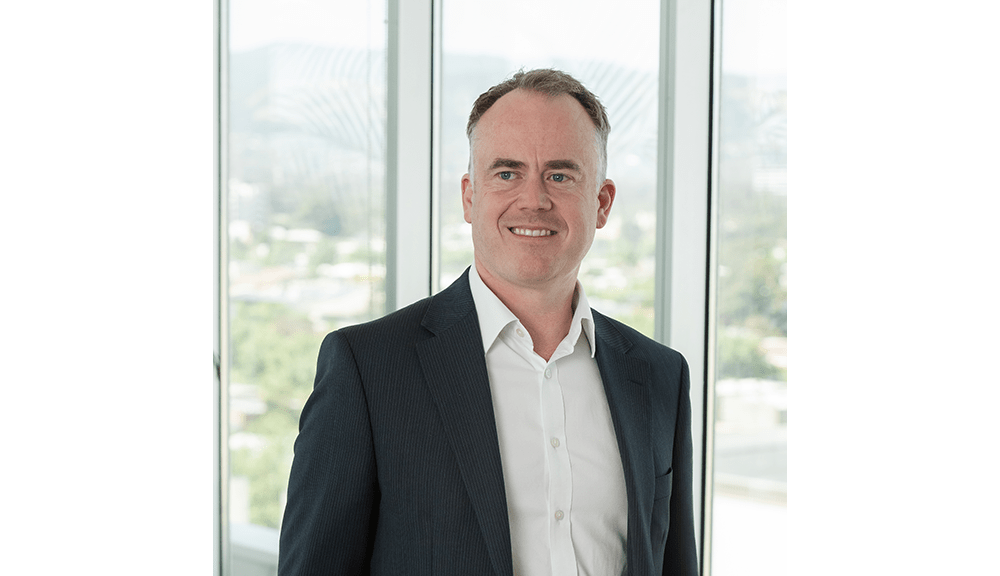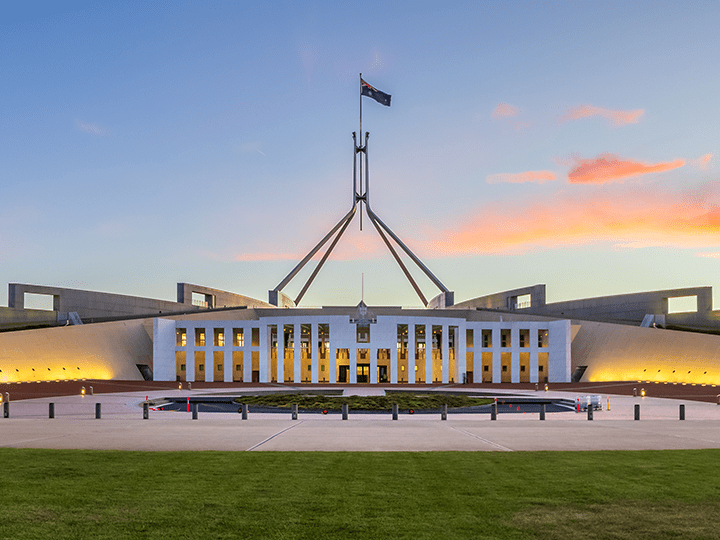Hi, everyone. Welcome back to another Charts That Matter market update. I’m Simon Hele, director of Perks Private Wealth, and I’m joined by Christo Hall, chair of our investment committee, to discuss the latest insights and views from our investment committee.
We will take a look at what’s happening, where we are now, and how we see these things as we look ahead. Hi, Christo. Wilco. Thanks, Simon.
Christo, the global economy seems to be navigating a pretty complex landscape at the moment. Can you give us a brief overview of what’s happening?
Yeah. Sure, Simon. It’s, it’s pretty interesting at the moment.
What’s happening is there’s a number of factors which are driving different economic conditions in different countries. So and that that’s all been dependent on where we are with the interest rate cycle and inflation. So right now, we’re seeing the US beginning to slow down, economically after they put rates up meaningfully, and the same is happening in Australia as well. Whereas you look at countries like Europe, they cut rates earlier, and this thing just shows signs of economic improvement.
You talked about inflation. How is that impacting the region?
So that’s been, you know, a major influence of where we’re at at the moment, Simon. And if you look at inflation around the world, it has come down a lot from the peaks we saw two years ago. But now it’s starting to, find levels where it’s getting harder to go, you know, materially more lower. And the main reason for that is because of the services component of inflation, which is really important, and that’s focusing on the wages, and rents, that we’re seeing both in Australia and all around the world. Those two components are making inflation a lot stickier.
Why that’s important is that’s going to affect the timing of rate cuts, by different countries.
Now the US is further advanced in their in their, in their rate cycle than what Australia is. They will probably start cutting rates from September of this year. Whereas in Australia, we are lagging the US. Inflation is more stickier here, so it’s very unlikely we’re going to see any rate cuts as we’ve been saying for a while this year. That’ll be a two thousand twenty five story.
Beyond the US and Australia, if you look at Europe, they are coming out of this sooner than than, than those two countries I just mentioned. So Europe has started to show signs of recovery here, so inflation is looking much closer to the central bank targets there. And the rate of rate cuts, in Europe is is is going to, be almost complete.
Going beyond the interest rates, what about geopolitical tensions? How are they impacting markets?
This is really interesting, Simon. I mean, we’ve if you look at what’s happening, really, around the world today, we’ve got we’ve got a significant number of countries which are, facing general elections, including some very large economies.
So we have got the US election coming up. We’ve have see going through the France elections now. We’ve had the UK.
Australia will have an election by by March of next year.
We’ve also got Germany as well, so some very big economies. And then outside of that OECD group, we’ve also got, you know, some large emerging economies such as Brazil that, and when we’ve had India as well. So it’s a very unusual period historically.
While that’s important, why that’s important, to highlight is that with changes in governments, depending on how these elections pan out, we could have a situation where we’re moving a lot more to the far left or far right with our political with our political views, at the country level, and that affects policy. And why that’s important is if we get changes in policy, that has a direct bearing on inflation and also earnings for companies. And we’re any we’re we’re reaching that that junction now.
We’re likely to see what I call a period of economic nationalism going forward, whereby countries are no longer going to the lowest cost producers such as China for for manufacturing.
For example, the buyer, you know, America First, you’ve heard that, caption used a lot.
So this nationalism means that it’s all about security of supply of manufacturing, for example.
And that that security of supply is gonna come at a cost which is going to be higher prices to pay for that, which obviously has some inflationary implications and the pace at which the, the interest rate cuts will proceed going forward.
Let’s talk about investment strategies. Given the current market conditions, what should investors be focusing on?
Simon, there are some opportunities which are protecting themselves at the moment, particularly in investment grade credit, and also in in emerging markets where those valuations are still significantly below their long term average. But I think given, you know, the uncertainties that we’ve discussed already, the key is to remain very well diversified in your investment strategies and to make sure you got the right strategic asset allocation, you know, for the for the medium to long term, to to reach your investment objectives.
Can you elaborate on the bond market and its current outlook?
Yeah. Sure, Simon. I mean, nominal bond yields are looking pretty attractive here, with both the US, and Australian yields, sitting over four percent.
And And inflation linked bonds also still look reasonable, and a great inflation hedge, you know, in your portfolio.
So there’s some attraction in that part of the market as well.
And I think there is room for some capital appreciation on the bond side. It’s not just about the yield. You and as economies begin to slow, going forward.
What about the property and infrastructure market?
Interesting question, Simon. The property markets are behaving differently. So if I look at, the unlisted office market, I still think there’s some valuation challenges there, and that’s still yet, yet to fully correct to, to reflect the conditions that that market’s showing.
There are certainly some selective opportunities presenting themselves in the retail space, and those valuations have have largely adjusted, but the key is being selective as I mentioned.
And the industrial property market key to use to to power ahead, given the growth we’re seeing, you know, structurally in ecommerce and the like.
So that’s that that’s that’s interesting to note.
On the infrastructure side, we’re going to see some some real long term opportunities here because, governments can’t afford to fund, you know, large infrastructure projects anymore. So they’re coming to the private markets to help fund those, and we’re gonna see, a lot of opportunities, presented to the client base over the medium term.
And again, it’s all about selecting the right projects because infrastructure is a great inflation hedge, across your portfolio, if you had that exposure.
Let’s shift our focus to the credit markets. What are we seeing there?
So, Simon, on on one hand, you’ve got, you know, a slowing economy, which means you’re going to see some increases in default rates, so I need to be mindful of that.
But on the other hand, you’re seeing, you know, attractive high nominal yields, in this part of the market, and certainly the credit that’s provided into some of those sectors which have got high growth such as education and IT, and health, they’re gonna be really good long term opportunities, going forward. So the key for risk management is to be very, very selective, and have that diversification across your across your credit portfolio.
How about the equity markets? What trends should investors be aware of?
So, Simon, with the equity markets, it’s all about earnings and fundamentals, and we’re seeing some very interesting differences in trends across countries.
So for example, if I look around the world, all of the earnings growth for the world equity markets, is coming from the US.
And a lot of it is technology based stocks, which we’ve all read about in in the press.
It’s starting to broaden out a bit, but most of the performance of the US market, over the last twelve months has come from a handful of those large tech stocks.
If you look at the earnings trends in other countries such as Australia, it’s it’s pretty subdued.
And I think going forward, there could be some, some more slowing in earnings in the near term. But valuations longer term still look okay.
They’re not extremely excessive.
And certainly, if you look at markets in the UK, and Europe, jurisdictions, they’re looking more compelling, as they’re coming through the cycle, earlier than anyone else. So we see some real opportunities there.
I suppose what’s going to be overly driving the direction of markets for the next two years is also the rate of interest rate cuts because that affects, you know, market valuations outside of, just purely the earnings.
So I’ll be watching to make sure that the number of rate cuts which are being priced into markets looking out further is actually going to occur.
Let’s touch on the currency market. What are we seeing there?
So, Simon, we’re still seeing the a dollar, continue to, to rally against the US dollar.
And that’s all been based on the purchasing the purchasing power parity and in straight differentials, you know, between us and the US, and we’re talking about the US dollar.
Given where the US is in their interest rate cutting cycle, I e, they’re about to start cutting, we think, you know, later this year versus Australia, there could be some further tailwinds to the a dollar appreciation versus the US. So, you know, those thoughts need to be considered when you’re looking at, hedging hedging, portfolios across the various strategies.
It sounds like there’s a lot to consider for investors in the current market. Thanks, Christo, for sharing your insights. Thanks, Simon. Good to be with you again.








